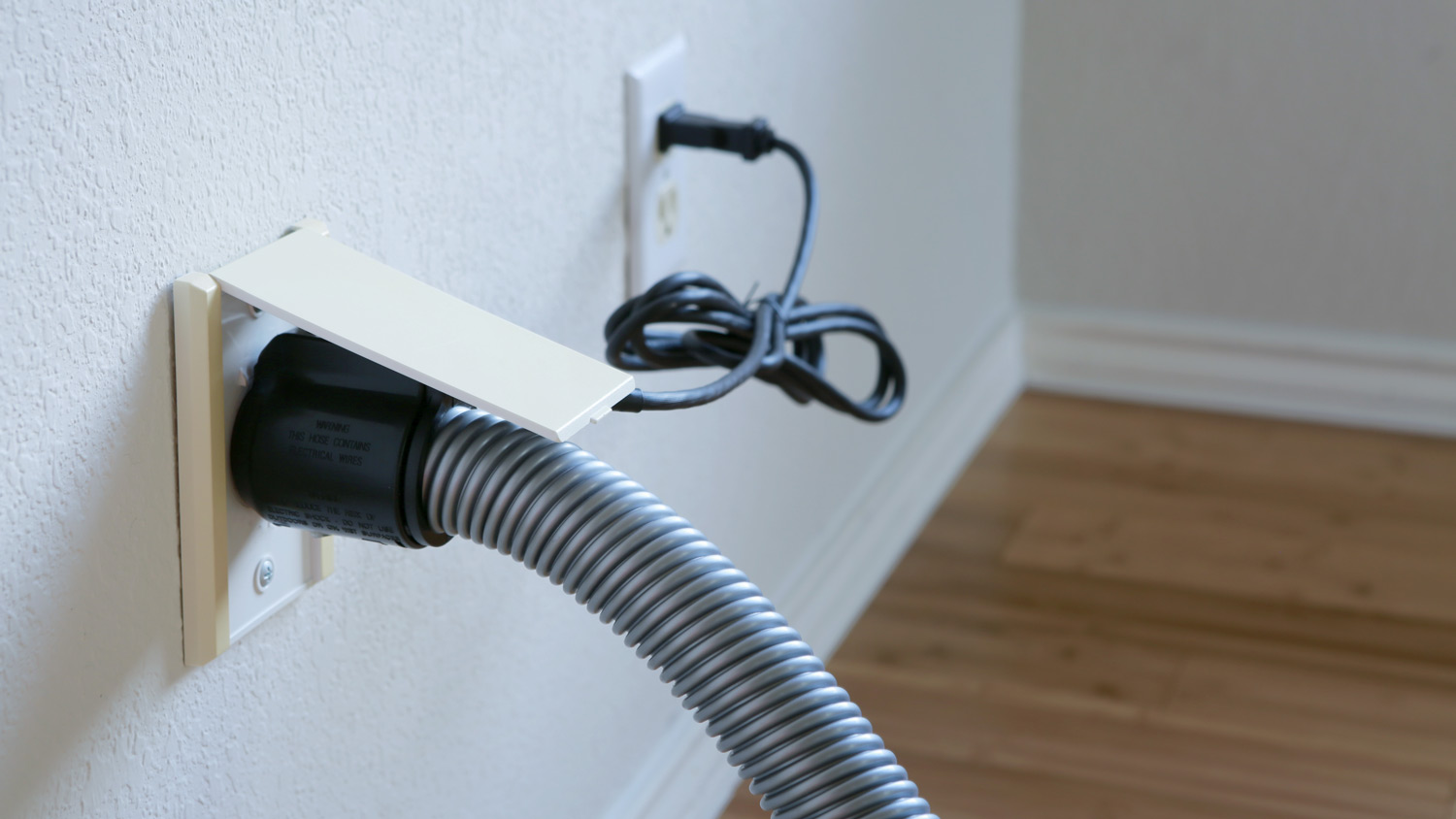Get the Lowdown on Central Vacuum Systems: Are They Worth It?
Central vacuums don’t work, they suck (in a good way)


A central vacuum system offers benefits such as quiet cleaning and more power.
Central vacuums are beneficial for people with pets, children, or allergies.
Downsides to central vacuums include higher costs and complex installations.
If you’re sick and tired of lugging around your heavy vacuum cleaner to remove the mountain of pet hair accumulating on your carpets, it might be time to consider a central vacuum system. If you’re ready to transition to a central vacuum system, first learn about key features, its benefits, and downsides that may impact your decision.
What Is a Central Vacuum System?
Unlike a traditional vacuum cleaner, a central vacuum system tends to be located in a remote location. This may be your basement, utility closet, or laundry room.
The unique aspect of a central vacuum system is that you don't have to carry around any appliance. Instead, it’s a permanently installed system that cleans your entire home through motorized suction.
In addition, a notable feature of the central vacuum is its suction power. These systems feature powerful motors that are extremely strong, making them more successful at keeping your carpet looking brand new.
This system consists of a power unit that holds the motor, tubes that run throughout the walls in your home, and a hose that sucks up dirt and debris and transports it to the tubes.
Benefits of a Central Vacuum System
When deciding whether or not a central vacuum system is for you, there are several considerations to mull over before coming to a conclusion.
If You Want a Quiet Option
Sometimes, it feels like there's absolutely no time in the day to get everything done, which may mean vacuuming at night from time to time. If that’s the case, a central vacuum system might be for you.
Since the motor is in a remote area rather than the living room, this system is significantly quieter than a traditional vacuum cleaner. You won't have to worry about waking up babies, bothering someone who works night hours, or disturbing your pets with central vacuum systems.
If You Have Pets That Shed
While we love our furry friends, being a pet owner certainly requires regular maintenance to your home (namely, the carpet), especially if they’re chronic shedders or if you or a family member experiences allergies.
Central vacuum systems feature a high suction power that makes the system stronger than a traditional vacuum—and more effective at eliminating pet hair and dander.
If You or Someone Else Has Allergies
According to the Asthma and Allergy Foundation of America, more than 50 million Americans suffer from various forms of allergies each year. If you experience allergies or asthma, a central vacuum system could be impactful and even game-changing for your health.
It can significantly improve indoor air quality due to how it features external vents. These provide any airborne particles an exit route from your home, with much less risk that dust and debris will get blown out of the unit and back into your home.
If You Have a Multilevel Home
When you purchase your dream multilevel home, you probably aren’t thinking about all the trips you’d have to make up and down the stairs. Regularly lugging around a heavy vacuum cleaner can become a laborious task that may lead you to consider an alternative solution.
When you install a central vacuum system in your home, there'll be no more back-breaking trips up and down the stairs with your appliance. All you’ll need to do is lift and connect the hose (which is lightweight) to the outlets.
Drawbacks of a Central Vacuum System

A central vacuum system is a great option for many homeowners and families, as it lessens individual labor load and is convenient for the various reasons mentioned above. Still, there are some cons to consider, which may sway you to stick with your traditional vacuum.
Difficult Installation
Something to consider is the ease of installation. Before hiring a local central vacuum installation company to install the system, you should know the installation can be somewhat disruptive.
The pro will install the unit in a remote room and proceed to run pipes, tubes, and a cable from the unit to the outlets. And in some cases, it may be necessary to break or tear down a wall (or several) to connect the tubes to the central unit.
Higher Costs
If you’re on a tight budget and not in the position to be making a dent in your wallet, the cost to purchase a central vacuum system may deter you. On average, the cost to install a central vacuum system ranges from $1,00 to $2,000, while traditional vacuum cleaners on the higher end of the typical price range tend to be around $200 to $500.
In addition, repair costs for central vacuum systems run higher. According to HomeAdvisor, the average cost to repair a central vacuum system is $290, while the cost to repair a traditional vacuum cleaner is usually around $15 to $55 per hour.


- Is a Central Vacuum System Right for Your Home? Learn Pros, Cons, Cost, and More
- Central Air vs. Window Units: What’s the Difference?
- How Often Should You Vacuum Your Floors?
- Mini Split AC vs. Central Air: What’s the Difference?
- Forced-Air vs. Central Air Systems: How Do They Compare?
- 8 Common Problems With Geothermal Heat Pumps
- How to Do Home Security System Maintenance: Weekly, Monthly, and Yearly Checklist Items
- How to Prepare Your Home for a New Carpet Installation
- 11 Home Heating Mistakes You Didn't Know Were Costing You
- What Is the Best Temperature to Set Your Air Conditioner to in the Summer?










